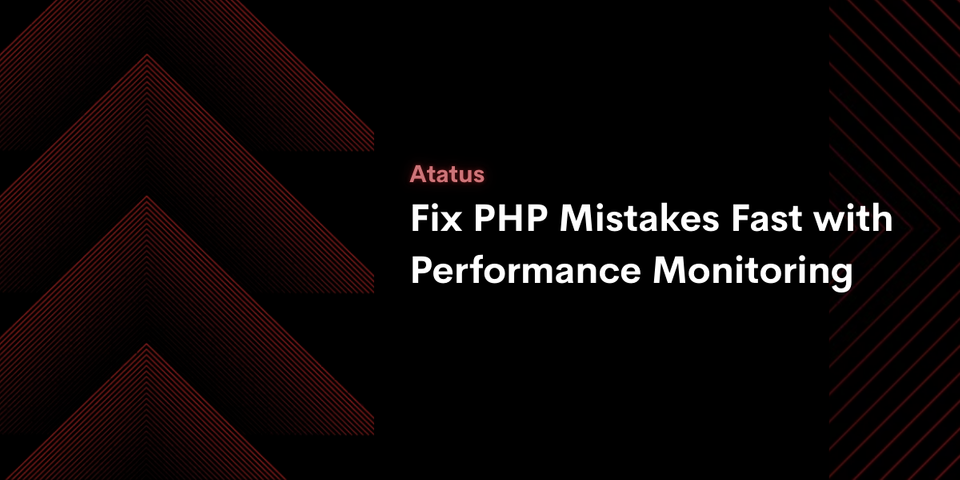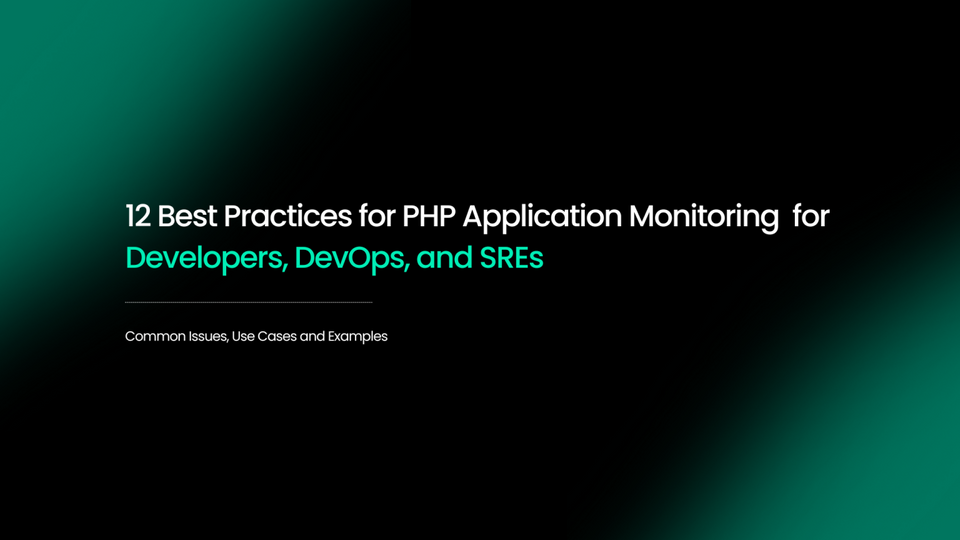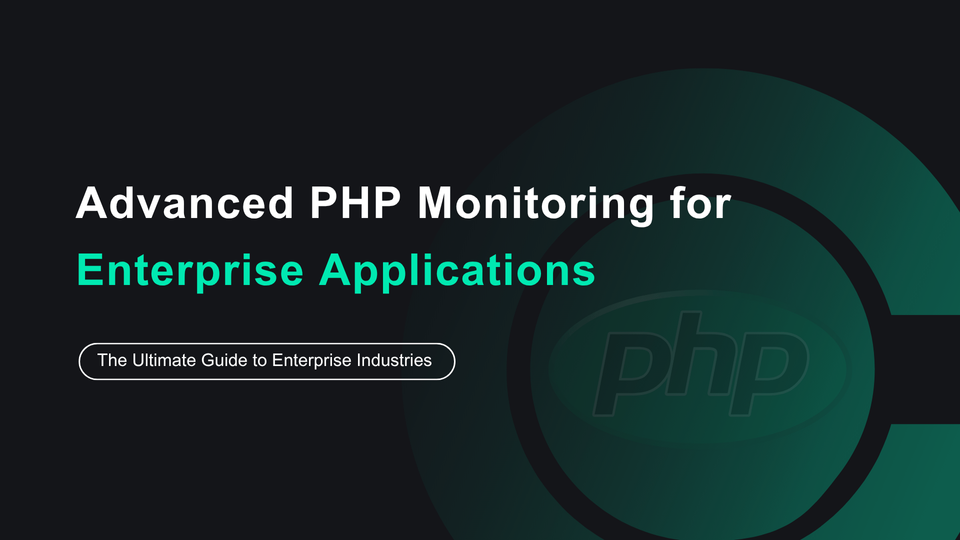A Practical Guide for Developers: Preventing PHP Mistakes with Performance Monitoring
Performance is one of the most critical aspects of any PHP application. A few seconds of delay or an unnoticed bottleneck can cause users to leave your site, increase bounce rates, and reduce business conversions.
For developers, ensuring top performance is not always easy. Small coding mistakes, inefficient queries can accumulate into major problems over time. Without visibility into what’s happening inside the application, it becomes difficult to identify the root cause of slowdowns or failures.
This guide walks you through the most common PHP development mistakes, the key performance metrics every developer should monitor, and how Atatus PHP APM helps you catch these issues early. With the right monitoring strategy, you can build applications that are faster, more scalable, and more reliable.
In this Blog Post,
- Common PHP Development Mistakes
- Key PHP Performance Metrics Developers Should Monitor
- How Atatus PHP APM Tools Help Developers Avoid Mistakes
- FAQs: Common PHP Development Mistakes & Monitoring
Common PHP Development Mistakes
Even skilled developers can make mistakes that affect PHP application performance. These mistakes often fall under four broad categories:
- Security-related mistakes
- Performance-related mistakes
- Code quality and maintainability mistakes
- General development practice mistakes
Let’s break them down.
1. Security-related mistakes
- Neglecting input validation
Failing to validate user inputs can open the door to vulnerabilities like SQL injection and cross-site scripting (XSS). These not only compromise application security but can also degrade performance under malicious attack traffic. - Poor session management
Weak handling of session IDs or sensitive session data increases the risk of hijacking and unauthorized access. Inconsistent session handling also leads to unexpected behaviors that frustrate users. - Using outdated PHP versions
Older PHP versions contain known security vulnerabilities that can be exploited. Beyond security, outdated versions may also lack performance optimizations introduced in newer releases. - Not using HTTPS
Transmitting data over HTTP makes applications vulnerable to data interception. Modern users expect encrypted communication, and failing to adopt HTTPS reduces both security and trust.
2. Performance Mistakes
- Inefficient database queries
One of the most common performance killers is poorly optimized SQL queries. Running queries inside loops or forgetting to index tables can slow down response times significantly. - Ignoring caching and optimization
Developers often forget to enable opcode caching, implement query caching, or leverage application-level caching. This results in redundant computations and slower response times. - Not setting script time limits
Long-running scripts consume excessive server resources, potentially leading to timeouts or crashes under heavy load. Setting proper execution timeouts prevents resource hogging.
3. Code Quality Mistakes
- Inconsistent coding standards
Without consistent styles and standards, PHP code becomes difficult to maintain. This slows down debugging and collaboration in development teams. - Poor error handling
Some developers disable error reporting in production without implementing logging mechanisms. This creates silent failures that remain unnoticed until they escalate. - No version control
Failing to use Git or other version control systems makes collaboration harder and increases the risk of losing critical changes or introducing regressions. - Overcomplicating code
Writing overly complex code introduces unnecessary bugs and makes future maintenance difficult. Simplicity improves readability and reliability.
4. General Development Practice Mistakes
- Skipping testing practices
Without proper unit, integration, or load testing, bugs and performance issues can slip into production and directly impact users. - Not keeping up with updates
Developers who fail to adopt the latest frameworks, libraries, or PHP versions miss out on performance improvements and best practices. - Ignoring client requirements
Delivering features that don’t align with client expectations leads to wasted time and unhappy customers, even if technically well-built.
These mistakes are widespread and often invisible until they affect end users. That’s why monitoring is not optional, it’s essential. By tracking the right metrics, developers can detect early warning signs and avoid costly consequences.
Key PHP Performance Metrics Developers Should Monitor
To avoid performance pitfalls, developers should monitor a set of key metrics that reveal the health and efficiency of their PHP applications.
1. Response Time
Response time measures how quickly the application reacts to user requests. Slow responses lead to poor user experience and reduced engagement. Monitoring helps identify endpoints or functions that require optimisation.
2. Apdex Score
Apdex (Application Performance Index) is a standard metric that reflects user satisfaction with response times. A score closer to 1 indicates happy users, while a lower score shows dissatisfaction. This is a simple yet powerful way to measure real user experience.
3. Exception/Error Rate
Tracking how frequently runtime errors occur helps developers prioritise fixes. High exception rates indicate unstable code, which can hurt both reliability and reputation.
4. Query Time
Since database queries often form the backbone of PHP applications, monitoring query execution time highlights slow or unoptimised SQL statements that need improvement.
5. HTTP Failure Rate
This metric tracks failed requests such as 4xx (client-side) and 5xx (server-side) errors. High failure rates point to broken endpoints, misconfigurations, or unreliable external dependencies.
6. SLA/Uptime Reports
Service Level Agreement (SLA) or uptime monitoring ensures that applications meet promised availability targets. Downtime, even for a few minutes, can be costly for both business and user trust.
Together, these metrics provide a holistic view of application health. But tracking them manually is not practical. This is where Atatus PHP APM tools make a difference.
How Atatus PHP APM Tools Help Developers Avoid Mistakes
Atatus PHP APM is designed to give developers the visibility they need to avoid common pitfalls. Here’s how its features map directly to solving developer mistakes:
1. Database Monitoring
Inefficient queries are one of the top reasons PHP applications slow down. Atatus automatically highlights slow queries, and transactions inside loops, giving developers precise areas to optimise.
2. Transaction Monitoring
With transaction monitoring, developers can trace end-to-end request flows, pinpointing where delays occur. Whether it’s in the PHP function, middleware, or third-party API, Atatus shows exactly which step caused the slowdown.
3. Error & Exception Tracking
Instead of letting errors remain hidden, Atatus logs every exception with full stack traces, context, and error origins. This helps developers fix problems faster without guessing.
4. Slow Request Tracing
Atatus drills down into slow requests to identify the exact code segments, functions, or external calls that cause performance lags. This removes the guesswork in performance tuning.
5. External Request Monitoring
Modern PHP applications rely heavily on third-party APIs (payment gateways, authentication services, external data sources). Atatus monitors these calls, ensuring developers know when external dependencies fail or slow down.
6. Release Tracking
Every new release carries the risk of introducing regressions. With release tracking, Atatus shows how application performance changes after each deployment. Developers can confirm whether new features degrade performance or stability.
7. Real-Time Alerts & Dashboards
Atatus offers customizable alerts that notify developers about critical issues, whether it’s rising error rates, failing APIs, or slow response times. Dashboards make it easy to visualize performance trends and act before end users notice.
With these features, Atatus transforms common mistakes into actionable insights, helping developers deliver faster, stable, and secure applications.
FAQs: Common PHP Development Mistakes & Monitoring
1. Why should I monitor my PHP application performance?
Monitoring helps detect slow queries, runtime errors, and bottlenecks early. Without it, performance issues may go unnoticed until users report them, impacting scalability and user experience.
2. Can monitoring tools help with security-related PHP mistakes?
While performance monitoring mainly tracks speed and reliability, some APM tools can indirectly highlight security issues, such as repeated failed requests, unusual API behavior, or suspicious spikes in error rates.
3. Which performance metrics should I track for PHP applications?
- Response Time (how fast your app responds)
- Apdex Score (user satisfaction)
- Exception/Error Rate (frequency of runtime issues)
- Query Time (database operation speed)
- HTTP Failure Rate (failed client-server requests)
- SLA/Uptime Reports (system reliability)
4. How can PHP APM tools help me avoid these common mistakes?
APM tools provide real-time insights into your application. Features like transaction monitoring, error tracking, slow request tracing, and database monitoring allow developers to:
- Identify inefficient queries
- Detect bottlenecks in code execution
- Log and resolve errors quickly
- Ensure deployments don’t introduce regressions
5. Do I need to change my PHP code to use an APM tool?
Most modern PHP APM tools, including Atatus, require minimal or no code changes. They integrate easily into your application to start tracking metrics, errors, and transactions immediately.
6. How often should I review performance metrics?
Answer: Performance monitoring should be continuous, but developers should regularly review dashboards, error logs, and SLA reports. Weekly or monthly reviews combined with real-time alerts ensure proactive issue resolution.
#1 Solution for Logs, Traces & Metrics
APM
Kubernetes
Logs
Synthetics
RUM
Serverless
Security
More





